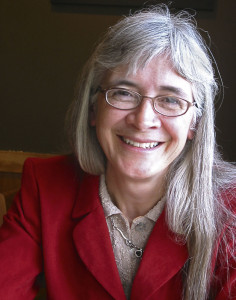I've often thought that there would be, and I have occasionally seen suggestions of, links between the Occupy Wall Street movement, with its emphasis on inclusivity and consensus processes, and restorative practices, restorative justice and circles. In this piece by OWS member Stephan Geras about recent trainings by Kay Pranis in New York City, that hunch is confirmed. Below are some key passages in Geras's post at ZNet, "Restorative Justice at OWS." All added emphases below are mine.
While working for the Minnesota Department of Corrections, around 1996, Kay  Pranis became a Peacemaking Circle Keeper and started using Circles for Restorative Justice in her work for the criminal justice system. As she told me, the process quickly generated national interest and she has since helped to implement circles for conflict resolution in adult and juvenile justice systems, schools, social services, workplaces, neighborhoods, churches and families. “I have worked on community building in government agencies, community non-profits and universities.”
Pranis became a Peacemaking Circle Keeper and started using Circles for Restorative Justice in her work for the criminal justice system. As she told me, the process quickly generated national interest and she has since helped to implement circles for conflict resolution in adult and juvenile justice systems, schools, social services, workplaces, neighborhoods, churches and families. “I have worked on community building in government agencies, community non-profits and universities.”
What Kay Pranis imparted to all of the participants in NYC besides the technical structuring of the Peacemaking Circle was a profound respect for human potential to want to care for others, a way into our hearts for healing and community building, a way to take responsibility without harm, a sense of interconnectedness and a way to make the process safe and inclusive. It’s easy to see how this can be helpful in many different ways and in many different communities. What goes to the reason why Ms. Pranis was so “thrilled” to be in NYC is expressed in her writing: “... to have strong, cohesive communities it is important for all legitimate interests to be understood and addressed - and for those to be addressed in a voluntary, collaborative process, not through an adversarial legal rights process. Everyone must feel included, respected and served by the process and the solution."
Geras also provides a view on the history of the RJ movement and the indigenous roots of peacemaking circles:
In the 60’sand 70’s radical social movements fought for prison reform and ideas in criminology moved toward restorative, transformative justice and further from punitive. Peacemaking faith based groups such as the Mennonites and the Quakers brought a special focus to prison work in the 1970s and much of the present ideas of restorative justice are influenced by their philosophies of transformative power and right thinking inherent in humans. One enduring example of this is the Alternative to Violence Project AVP, a conflict resolution and community building experiential workshop model developed in prisons through collaboration between Quakers and inmates, which is now used internationally inside and outside prisons. The practice of restorative justice methods in the criminal justice system really took off in the 70’s after its successful use in replacing a trial in a criminal proceeding in Canada.
Peacemaking Circles as a form of restorative justice imitate what has traditionally been used in Native American and Aboriginal cultures as a way of addressing whatever is impacting the community and as a way to heal harm done in a community. The process brings together the agent of the harm, the victim, family members and members of the community where the harm was done, identifies the values and issues of the participants, seats them in a circle and, using a “talking piece” allows everyone in the circle to speak without interruption, with attention and with respect. There are no outsiders, observers, directors; everyone is an equal including the “keeper” who is vaguely like a facilitator except she doesn’t make decisions or push the agenda. Decisions are made by consensus and nothing is completed until all have finished saying what they need to. As you can imagine this process takes time, it takes patience and it takes deep listening. Confidentiality must be respected and the participants must feel safe. It was feminist scholar M. Kay Harris who, calling for restructuring criminal justice to reflect feminist values, definitively characterized this approach: “that all people have equal values as human beings, that harmony and happiness are more important than power and possession and that the personal is political”[.]
The piece ends by noting that "Ms. Pranis sent us this message from Minneapolis:
'This work (the restorative justice circle) feels like the heart of what needs to be done. I will make myself available for further work with OWS.'"
Read the entire piece at ZCommunications | Restorative Justice At OWS by Stephan Geras | ZNet Article.
And for further reading, click here to see an excellent lengthy piece by Pranis in the IIRP library, titled "Conferencing and the Community" from 1998. Here Pranis begins by talking about her first meeting with Terry O'Connell, director of IIRP affiliate Real Justice Australia and creator of the Real Justice restorative justice conferencing script.

